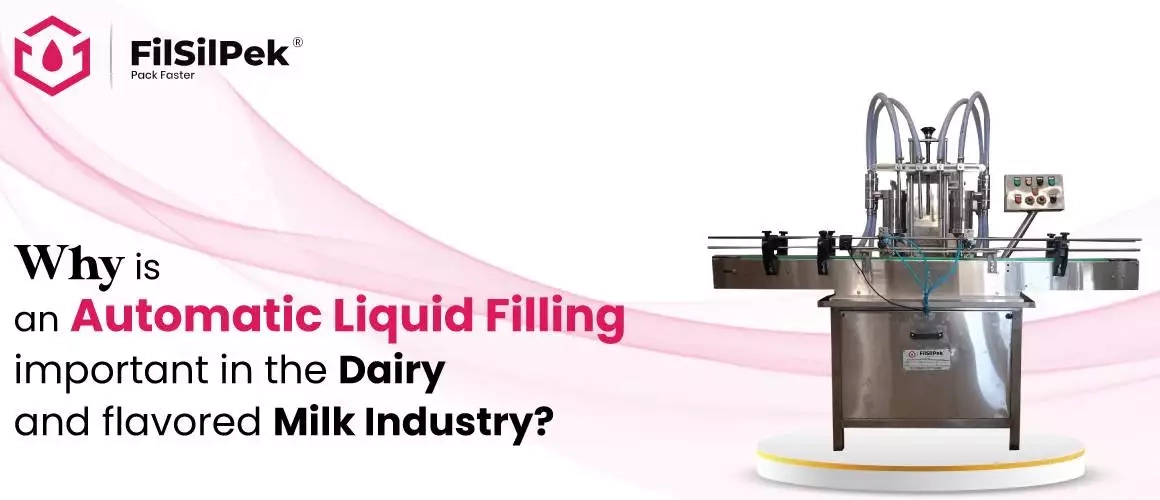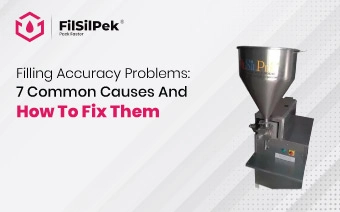Why is an automatic liquid filling important in the dairy and flavored milk industry?
The dairy and flavored milk industry operates under strict hygiene standards, high-volume demands, and evolving consumer preferences. Efficient packaging solutions are essential to maintaining product quality, reducing contamination risks, and optimizing production costs. Automatic liquid filling machines provide a reliable and scalable solution, ensuring consistency, efficiency, and compliance with industry regulations.
This article explores the significance of automatic liquid filling in dairy production, highlighting its role in enhancing operational efficiency, meeting regulatory requirements, and supporting product innovation.
The role of automatic liquid filling in modern dairy production
Automatic liquid filling machines are specifically designed to handle the unique characteristics of dairy products, including viscosity, foam formation, and temperature sensitivity. These machines integrate advanced technologies to ensure accurate dispensing, contamination control, and seamless packaging.
1. Maintaining accuracy and reducing product loss
Precise filling is critical in dairy production to ensure uniform product volume across all packaging units. Automatic fillers utilize technologies such as:
- Flowmeter-based filling – Measures product flow in real-time for consistent volume control.
- Volumetric piston filling – Ideal for thicker dairy beverages such as flavored or high-protein milk.
- Weight-based filling – Uses load cells to ensure precise weight measurements, reducing overfilling and wastage.
By minimizing variations in fill volume, manufacturers can optimize material costs while ensuring compliance with industry weight and volume regulations.
2. Hygienic design to prevent contamination
Dairy products are highly susceptible to microbial contamination, requiring strict hygiene controls throughout production. Automatic liquid filling machines are designed with:
- 316L stainless steel contact parts – Resistant to corrosion and easy to clean.
- Aseptic filling technology – Uses sterile environments, UV sterilization, or steam sterilization to maintain product purity.
- CIP (Clean-in-Place) and SIP (Sterilization-in-Place) systems – Automated cleaning processes that eliminate residue buildup without manual intervention.
These features significantly reduce the risk of bacterial growth, ensuring product safety and longer shelf life.
3. Handling different packaging formats efficiently
Dairy and flavored milk products come in various packaging types, requiring machines that can accommodate different container designs. Automatic filling systems support:
- PET and HDPE bottles – Common for retail-ready flavored milk and dairy beverages.
- Cartons (Tetra Pak) – Used for long-shelf-life UHT milk and dairy-based drinks.
- Pouches and sachets – Preferred for cost-effective single-serve portions.
- Glass bottles – Often used for premium dairy and organic milk brands.
With quick-changeover capabilities, modern filling machines enable manufacturers to switch between different packaging formats with minimal downtime, enhancing production flexibility.
4. Optimizing production speed and reducing labor dependency
As consumer demand for dairy products increases, manual filling processes become inefficient and labor-intensive. Automatic filling machines:
- Operate at high speeds – Capable of filling thousands of units per hour, meeting mass production needs.
- Integrate with downstream packaging equipment – Synchronization with capping, sealing, and labeling machines enhances workflow efficiency.
- Reduce labor costs – Minimizes reliance on manual handling, lowering operational expenses.
Automation allows dairy manufacturers to scale operations while maintaining consistency and quality across batches.
5. Compliance with industry regulations and food safety standards
The dairy industry is subject to stringent regulatory standards that govern product safety, labeling, and packaging integrity. Automatic filling machines help manufacturers meet:
- FDA (Food and Drug Administration) guidelines – For dairy processing and packaging in the U.S.
- FSANZ (Food Standards Australia New Zealand) regulations – Ensuring food safety in Australian markets.
- HACCP (Hazard Analysis and Critical Control Points) protocols – Reducing risks of contamination and maintaining hygiene compliance.
- EU dairy regulations – Covering food contact materials, product labeling, and traceability.
Many modern filling systems come with built-in data logging and batch tracking features, simplifying audits and ensuring full traceability for recall management.
6. Minimizing foaming and oxidation in dairy products
One of the biggest challenges in liquid dairy filling is managing foam and oxidation, which can compromise product quality. Automatic fillers incorporate:
- Anti-foam filling nozzles – Designed to reduce turbulence and prevent excessive foaming.
- Bottom-up filling technology – The nozzle moves upward as the container fills, reducing splashing and air entrapment.
- Nitrogen flushing systems – Removes oxygen from the container before sealing, preserving freshness and preventing oxidation.
These technologies ensure better shelf stability and maintain the intended taste and texture of flavored milk products.
7. Smart automation and Industry 4.0 integration
With the rise of smart manufacturing, automatic liquid filling machines now incorporate advanced automation features such as:
- IoT-enabled monitoring – Real-time tracking of production metrics, allowing predictive maintenance and remote troubleshooting.
- AI-driven quality control – Identifies defects in real-time, reducing rework and waste.
- Automated adjustments – Machine learning algorithms fine-tune fill levels based on product viscosity and temperature variations.
These innovations improve operational efficiency and enable manufacturers to adapt quickly to market changes.
Factors to consider when choosing an automatic liquid filling machine for dairy production
Selecting the right automatic liquid filling machine requires evaluating several key factors:
- Product viscosity and characteristics – Different dairy products (e.g., skim milk, cream, high-protein shakes) require specific filling technologies.
- Production capacity – Machines should align with current and projected production volumes.
- Packaging format compatibility – Ensure the system supports various container types for flexibility.
- Hygienic and aseptic design – Compliance with food-grade standards is essential for dairy applications.
- Ease of maintenance and CIP/SIP capabilities – Machines with automated cleaning systems reduce downtime and maintenance efforts.
- Integration with existing production lines – Seamless connectivity with capping, labeling, and pasteurization systems enhances efficiency.
Conclusion
Automatic liquid filling machines are essential for the dairy and flavored milk industry, offering high-speed, hygienic, and precise filling solutions. They ensure accurate dispensing, minimize contamination risks, and help manufacturers comply with stringent food safety regulations. Advanced features such as CIP/SIP cleaning, smart automation, and flexible packaging options make them indispensable for modern dairy production.
Investing in the right liquid filling system enables dairy manufacturers to optimize efficiency, reduce wastage, and maintain high product quality, positioning them for long-term growth in a competitive market.
How to Maintain Filling Accuracy When Switching from PET Bottles to Pouches
Moving from PET bottles to flexible pouches changes more than your packaging design It changes….
What Manufacturers in the Edible-Oil Industry Must Consider When Upgrading Their Packing Line?
Upgrading the packing line doesn’t mean getting newer machine…
Filling accuracy problems: 7 common causes and how to fix them
In every production unit where filling is at the heart of operations…



